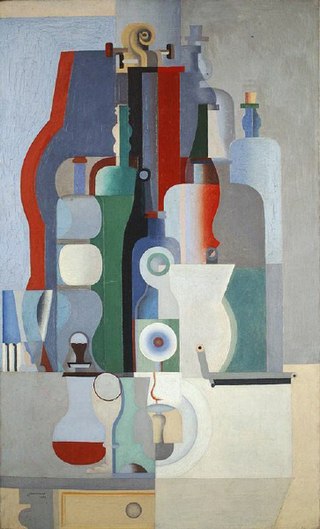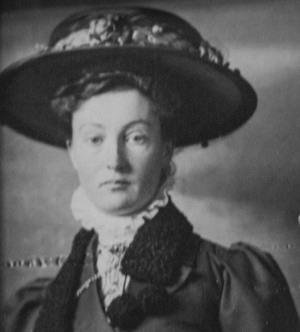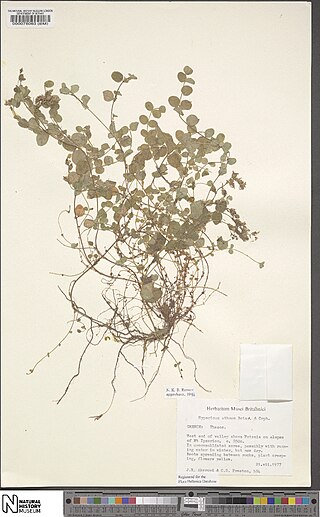Orphism may refer to:
- Orphism, a religious movement in antiquity, supposed to have been founded by Orpheus
- Orphism (art), a school of art, also known as "Orphic cubism"
Orphism may refer to:
In philosophy, metempsychosis is the transmigration of the soul, especially its reincarnation after death. The term is derived from ancient Greek philosophy, and has been recontextualized by modern philosophers such as Arthur Schopenhauer, Kurt Gödel, Mircea Eliade, and Magdalena Villaba; otherwise, the word "transmigration" is more appropriate. The word plays a prominent role in James Joyce's Ulysses and is also associated with Nietzsche. Another term sometimes used synonymously is palingenesis.

Guillaume Apollinaire was a French poet, playwright, short story writer, novelist and art critic of Polish descent.

In Orphic cosmogony Phanes or Protogonos is a primeval deity who was born from the cosmic egg at the beginning of creation. He is referred by various names, including Erikepaios "Power" and Metis "Thought".

Jean Crotti was a French painter.

Robert Delaunay was a French artist of the School of Paris movement; who, with his wife Sonia Delaunay and others, co-founded the Orphism art movement, noted for its use of strong colours and geometric shapes. His later works were more abstract. His key influence related to bold use of colour and a clear love of experimentation with both depth and tone.

František Kupka, also known as Frank Kupka or François Kupka, was a Czech painter and graphic artist. He was a pioneer and co-founder of the early phases of the abstract art movement and Orphic Cubism (Orphism). Kupka's abstract works arose from a base of realism, but later evolved into pure abstract art.

Morgan Russell was a modern American artist. With Stanton Macdonald-Wright, he was the founder of Synchromism, a provocative style of abstract painting that dates from 1912 to the 1920s. Russell's "synchromies," which analogized color to music, were an early American contribution to the rise of Modernism.

Orphism or Orphic Cubism, a term coined by the French poet Guillaume Apollinaire in 1912, was an offshoot of Cubism that focused on pure abstraction and bright colors, influenced by Fauvism, the theoretical writings of Paul Signac, Charles Henry and the dye chemist Michel Eugène Chevreul. This movement, perceived as key in the transition from Cubism to Abstract art, was pioneered by František Kupka, Robert Delaunay and Sonia Delaunay, who relaunched the use of color during the monochromatic phase of Cubism. The meaning of the term Orphism was elusive when it first appeared and remains to some extent vague.

Orphism is the name given to a set of religious beliefs and practices originating in the ancient Greek and Hellenistic world, associated with literature ascribed to the mythical poet Orpheus, who descended into the Greek underworld and returned. This type of journey is called a katabasis and is the basis of several hero worships and journeys. Orphics revered Dionysus and Persephone. Orphism has been described as a reform of the earlier Dionysian religion, involving a re-interpretation or re-reading of the myth of Dionysus and a re-ordering of Hesiod's Theogony, based in part on pre-Socratic philosophy.

Synchromism was an art movement founded in 1912 by American artists Stanton Macdonald-Wright (1890–1973) and Morgan Russell (1886–1953). Their abstract "synchromies," based on an approach to painting that analogized color to music, were among the first abstract paintings in American art. Though it was short-lived and did not attract many adherents, Synchromism became the first American avant-garde art movement to receive international attention. One of the difficulties inherent in describing Synchromism as a coherent style is connected to the fact that some Synchromist works are purely abstract while others include representational imagery.

Orph is a three-song demo that was released by the band Dredg in 1997.

Purism, referring to the arts, was a movement that took place between 1918 and 1925 that influenced French painting and architecture. Purism was led by Amédée Ozenfant and Charles Edouard Jeanneret. Ozenfant and Le Corbusier formulated an aesthetic doctrine born from a criticism of Cubism and called it Purism: where objects are represented as elementary forms devoid of detail. The main concepts were presented in their short essay Après le Cubisme published in 1918.

Omophagia, or omophagy is the eating of raw flesh. The term is of importance in the context of the cult worship of Dionysus.
The following outline is provided as an overview of and topical guide to the history of painting:

The Cathedral (Katedrála) is an abstract painting created by Czech artist František Kupka in 1912–13. The medium is oil on canvas, and the painting’s dimensions are 180 × 150 cm. The painting is a part of the permanent Jan and Meda Mládek collection of Museum Kampa in Prague, Czech Republic. This painting is one of a series of abstract works that Kupka termed Vertical and Diagonal Planes. Vertical lines, running the entire length of the canvas are intersected by diagonal lines to form rectilinear shapes of various sizes. The diagonal lines run from the top left to the bottom right and from the top right to the bottom left of the painting. These rectilinear shapes are composed of blocks of black, white, and a range of blue, red, purple, gray, and brown color. The large black space between the two clusters of the shapes, and the arching of the top of the right cluster, brings to the viewer’s mind two stained glass windows illuminated by light in a dark cathedral.

Mary Swanzy HRHA was an Irish landscape and genre artist. Noted for her eclectic style, she painted in many styles including cubism, futurism, fauvism, and orphism, she was one of Ireland's first abstract painters.

Hypericum athoum is a perennial herb in the Hypericaceae family. It is endemic to Greece.
Virginia Margaret Spate was a British-born Australian art historian and academic.

Udnie, also known as Udnie , is an oil on canvas painting by French artist Francis Picabia, executed in 1913. It is held at the Musée National d'Art Moderne, Centre Georges Pompidou, in Paris.